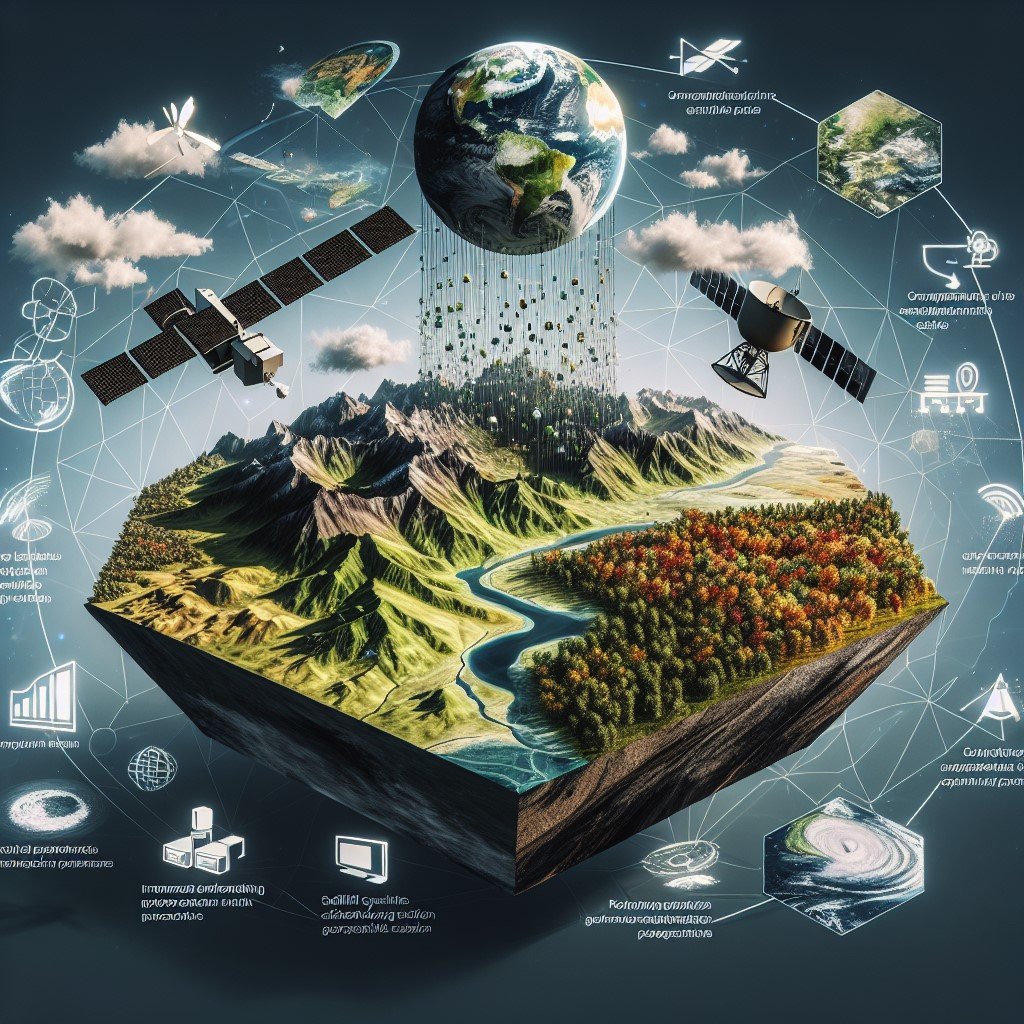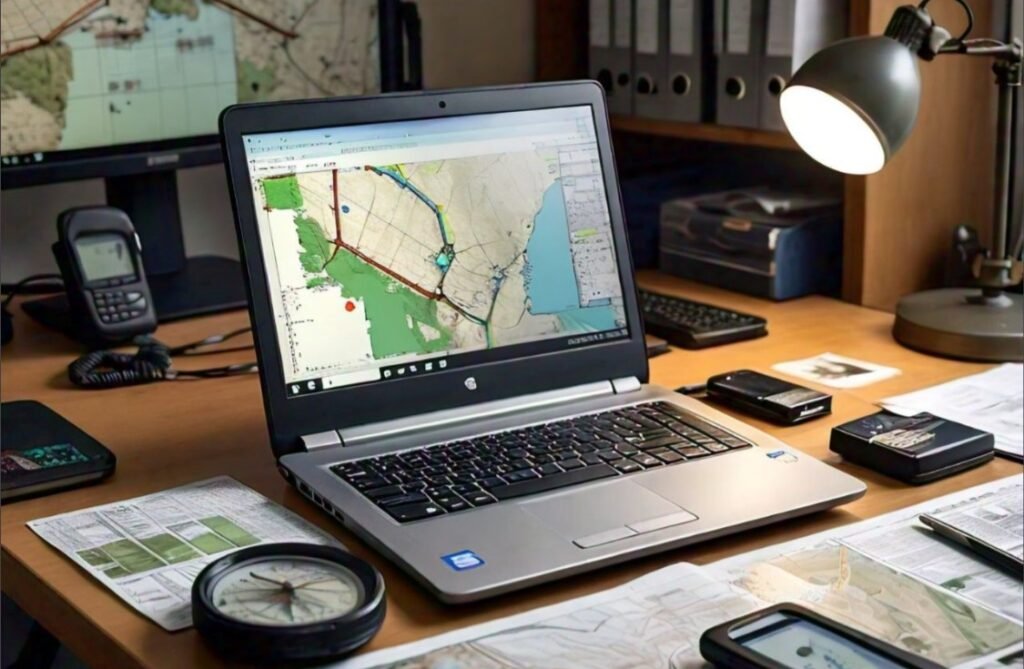Introduction
In the field of geospatial analysis, automation is becoming increasingly essential. It enhances productivity by allowing analysts to handle large datasets more efficiently and ensuring reproducibility. With its rich ecosystem of spatial libraries, Python provides an excellent framework for automating various spatial tasks. In this guide, we’ll dive into the workflow of automating spatial analysis with Python and Jupyter Notebooks, highlighting the key libraries and techniques for streamlining tasks.
Why use Python for automating spatial analysis?
Python is a powerful tool for geospatial analysis due to its simplicity, flexibility, and a vast array of libraries. The language enables users to automate time-consuming tasks like data cleaning, transformation, and analysis. Libraries like GeoPandas, Rasterio, and Shapely simplify handling vector and raster data, spatial operations, and transformations. By automating these processes, GIS professionals can focus on higher-level tasks like interpreting results, improving decision-making, and generating reports.
Key Python Libraries for Automating Spatial Analysis
Several Python libraries are particularly useful for automating spatial analysis. GeoPandas is central for working with vector data, allowing users to easily load, manipulate, and analyze spatial datasets. For raster data, Rasterio provides functions for reading, writing, and performing analyses on geospatial rasters, such as calculating indices like NDVI. Shapely facilitates geometric operations, including buffering and spatial relationships like intersection and union. Other tools, such as Pyproj for coordinate transformations, Folium for interactive mapping, and Matplotlib for static plotting, all contribute to a streamlined spatial analysis workflow.
Automating Spatial Data Processing: Step-by-Step Code Examples
To get started with automating spatial analysis, we’ll cover the basics of loading and processing both vector and raster data.
First, using GeoPandas, you can load shapefiles and perform spatial joins, buffering, and overlays. Here’s a simple example to load a shapefile and perform a spatial join with another dataset:
import geopandas as gpd
# Load vector data
gdf = gpd.read_file("path/to/shapefile.shp")
# Perform spatial join
gdf2 = gpd.read_file("path/to/another_shapefile.shp")
result = gpd.sjoin(gdf, gdf2, how="inner", op="intersects")For raster analysis, Rasterio allows us to read raster files and perform basic operations, such as extracting pixel values or calculating NDVI.
import rasterio
# Read raster data
with rasterio.open("path/to/raster.tif") as src:
red_band = src.read(3)
nir_band = src.read(4)
ndvi = (nir_band - red_band) / (nir_band + red_band)Integrating Python with Jupyter Notebooks for Automation
Jupyter Notebooks provide an interactive environment perfect for automating and visualizing spatial analysis tasks. The notebooks allow for easy debugging, incremental testing, and visual exploration of data.
You can use magic commands like %%time to profile performance, ensuring that the code runs efficiently. In addition, combining Python scripts with Jupyter’s interactive capabilities helps create reproducible workflows, where users can run analysis step-by-step and instantly see the results.
%%time
# Profiling large raster processing
with rasterio.open("path/to/large_raster.tif") as src:
data = src.read(1)Advanced Spatial Analysis Automation
Once the basics are covered, you can move on to more complex spatial analysis tasks. For instance, automating buffer zones and overlay operations is crucial for spatial planning and land management. The Shapely library can perform geometric operations, while PySAL supports spatial econometrics and advanced spatial analysis, like regional clustering or spatial dependence modeling.
Here’s how to automate the creation of buffer zones around polygons:
gdf['buffer'] = gdf.geometry.buffer(10) # 10 units of bufferFor network analysis, tools like OSMNX allow for the automation of road network analysis, such as finding the shortest path or optimizing routes.
import osmnx as ox
# Download street network data for a city
graph = ox.graph_from_place('Pittsburgh, Pennsylvania', network_type='all')
# Find the shortest path between two locations
route = ox.distance.shortest_path(graph, origin, destination, weight='length')
ox.plot_graph_route(graph, route, route_linewidth=6, node_size=0, bgcolor='k')Visualizing Results and Automating Reports
Visualizing results is key to understanding the data, and Python offers various libraries to assist in this. For interactive maps, Folium is a great tool, while Matplotlib is suitable for generating static maps and charts. You can automate the generation of these visualizations and even embed them in reports.
import folium
# Create an interactive map
m = folium.Map(location=[lat, lon], zoom_start=12)
folium.Marker([lat, lon], popup="Location").add_to(m)
# Save the map as HTML
m.save("output_map.html")Additionally, Jupyter Notebooks can generate automated reports by combining code, visualizations, and markdown. You can export the entire notebook to a PDF or HTML file for documentation purposes.
Best Practices for Automation and Optimization
While automating spatial analysis, it’s essential to follow best practices to ensure your workflows are efficient and reliable. This includes handling errors with try-except blocks, logging important steps for troubleshooting, and optimizing processing speed using profiling tools. When dealing with large datasets, consider parallelizing tasks or utilizing cloud services like AWS Lambda to automate spatial tasks in a scalable manner.
Conclusion
Python has emerged as a powerful tool for automating spatial analysis, with a range of libraries that simplify complex tasks and enhance workflow efficiency. By integrating tools like GeoPandas, Rasterio, Shapely, and Pyproj, you can automate the entire process from data loading and cleaning to advanced spatial analysis and visualization. The combination of Python and Jupyter Notebooks offers a flexible, interactive environment to streamline geospatial analysis, making it more accessible and reproducible.



